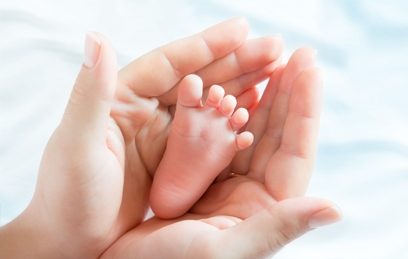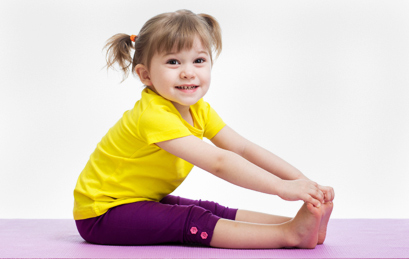Sensory integration and playing with children
It is easy for us to drink coffee and read a newspaper (or perhaps some articles on the Internet) at the same time. We can also drive a car and listen to music or talk on the phone simultaneously. We are able to talk when we have dinner and have a conversation while we dance. When we walk down the street, we feel the cold wind and automatically tighten the scarves around our necks. We maintain our balance on icy pavements and when there is a need to overcome an obstacle, such as a high curbs, we do it with ease. We stop at the traffic lights and react to the sound of an ambulance passing by.
We do all this “naturally” and automatically.
These are our automatic reactions to the changes in our environment. It is also the ability to efficiently perform several activities at the same time. We get the information from the external world by receiving stimuli through our senses – vision, hearing, smell, taste and touch. We can properly respond to these stimuli if our nervous system works correctly and converts them into impulses that guide our behaviour. The next important part is the “calibration” of such additional “inner senses”. We have a sense of balance thanks to our inner ear and vagus nerve. These are also the senses that allow us to assess the ambient temperature, the passage of time, spatial orientation or, the so called, “proprioceptive sensation”.
It would seem that we don’t have to learn all of this – maintaining balance, efficient movement in space, coordination and precision of movement, and the right stimulus for responding to changing data from the environment. Like learning to walk or speak. That these skills are simply passed down through our genes.
But they are not. Our natural “sensors”, which react to the information collected by the senses from the outside world, also need to be fine-tuned. We simply have to learn this. However, the whole learning process takes place incidentally. We learn through all the activities that we perform from the first days of our lives.
It has been known for a long time that the sense of touch develops and becomes more sensitive when the parents nurse their babies and take care of them. That is why it is so important to stroke and cuddle the baby at the earliest stages of development. It is also important to rock and hold the baby, because apart from building close relationships with loved ones and providing a sense of safety, these are also the moments which help form a sense of balance.
Providing children with toys that can be touched, lifted and moved teaches them coordination and precision of movement.
It has been proven in many studies that gymnastics for babies and rocking them to the rhythm of music plays an important role not only in their physical and motor development but also in the intellectual one. This has a positive effect on brain performance and cognitive skills. Movement is the only known natural stimulator of neurogenesis. In other words, physical activity increases intellectual performance and influences the mental development and skills of a toddler.
From the moment we are born, we develop our senses and we work on their proper “calibration”. We do all this by getting to know the world around us. And that is, usually, enough.
But we should keep in mind, that something can go wrong along the way. That is also the moment when problems arise. It is difficult to focus attention on the basic activity at the moment.
For instance, a person cannot read a morning newspaper while drinking coffee because he is distracted by unpleasant noises and smells from their surroundings. He hears the bell of a tram passing by the window and immediately forgets how the last sentence sounded like. Or hears a part of someone’s conversation from behind the window. And he no longer knows what the text was about.
Another person cannot finish the report, because he gets distracted by his phone, incoming emails, and he suddenly feels the need to get up from his desk and make some tea. In addition, he cannot finish up the sentence since he forgot what he wanted to say.
People call them easily-distracted, or they say that they “have their heads in the clouds”, that they are chaotic and bumbling. Or that they cannot stay in one place for a minute. Unfortunately, these are not compliments.
The problem is even bigger when we know that it concerns children. The educational environment – nurseries and schools, want the children to be able to focus. These facilities expect a youngster to be able to concentrate, listen to instructions or do a certain task for an hour or so. For some kids this task is way too difficult.
In the past we described such children as “naughty” or even “ill-mannered”. However, recent research has shed light on this issue and explained that such behaviour is not related to pedagogical problems, but to integration problems. A person who has a sensory integration disorder has a problem with the selection of stimuli coming from the environment, in accordance with their strength and significance. It is a specific hypersensitivity to sensory sensations, which are treated by such people as equally important at a given moment. Everything is important to them. Not only the text they read, but also a spot on the bench, the colour of a friend’s pencil case, squeaky chalk on the board, birds singing coming from the outside and the sound of the teacher’s heels. It is impossible to focus in such chaos. Such people cannot focus on anything for a longer period of time, because they are simply too distracted by their environment.
Nowadays we know quite a lot about “sensory integration” thanks to the findings of clinical psychology. We owe all this to prof. Jean Ayres and her works on cognitive abilities of preschool children. Prof. Ayres published her most significant works in the middle of the last century. She dealt with occupational therapy and cognitive psychology at the University of Southern California, where she developed pioneering research on the impact of the “calibration” of sensory data. She was also the person who coined the term “Sensory Integration”, introduced it to the world of science. Later on, the same, exact term caught on and was presented as a therapy.
Thanks to the work of prof. Ayres we know that the phenomenon of tuning the senses and the nervous system is a spontaneous process which starts takes place from the moment the child is born till the age of 7. This spontaneous “sensory integration” takes place through everyday contacts with the environment. Especially through free, spontaneous play combined with active learning about the surrounding world.
We know that the process of sensory integration can also be disturbed by unfavourable internal or external circumstances. Good news is that such disorders can be corrected. However, as the old medical saying goes “prevention is better than cure”. It is much more easier to take care of the proper sensual and motoric development of a child from the moment they were born, than to go through a long-term therapy. Especially when parents have the preventive measures at hand. All you need to do is let your child play spontaneously and not hinder his or her activity, curiosity about the world and creativity (within reason and safety). When it comes to proper sensory integration, there is nothing better than running barefoot on grass, climbing (low) trees, jumping on puddles, playing in a stream, clay modelling or jumping over the low walls. Playing with snowballs, sledding, building snowmen and sandcastles makes a big difference. Or, perhaps, the recent trend of jumping on the trampoline.
Let bigger kids do that! The ones that are already quite well “integrated”. And what about toddlers?
How can we organise “a playground” for them inside a baby’s room. It is very easy! Especially with so many “therapeutic toys” available in the market, which have been developed with sensory integration in mind. To build a sensory integration playground use our set of Multifunctional PHYSIO pillows, which can also help you in other activities such as infant and baby care.
The set consists of two pillows. A bigger pillow, which is perfect for laying the baby down. The same pillow can be used later on as a safe playpen and a very comfortable place to seat. The smaller pillow is perfect for breastfeeding and when the baby is older, it can be used as an object helping the baby exercise balance, grasping and coordination.
A bigger pillow will provide your baby with safety, comfort and protect against spontaneous roll over. It will also provide your little one with an additional stimuli that will develop their sense of touch during the first months while lying down, i.e. a soft fabric filled with soft balls.
When your baby starts crawling on their own PHYSIO pillow can be used as an obstacle where one can move safely, and overcome the “challenges” consisting of an uneven surface made of soft micropearls hidden under the cotton pillow cover. This type of play will develop your little one’s motor coordination and support the development of muscles by stimulating their proper tension. By crawling over the pillow, from right to left, your baby learns how to work with the central axis of their body and develops their sense of balance and orientation in space.
But that’s not all! Multifunctional PHYSIO pillow will also come in handy when the child has already learnt to sit up and starts crawling. Then it can be used as a comfortable and safe seat when playing with blocks and other educational toys. Such as soft, colourful books, which are often children’s favourite toys.
Multifunctional PHYSIO pillow can also help children who have already mastered walking, because their journey through sensomotoric development has not ended yet. A large pillow can also serve as a training mat for children at this age. The smaller pillow may be used for exercising. Your child can hold it over their head and carry it from one side to another, while lying down. The multifunctional PHYSIO mini pillow can also be used as a safe balance beam. Your baby can build balance skills by walking on the pillow and moving one feet behind the other. To make this task even more difficult you can ask your little one to simultaneously roll the ball with their feet. It is a perfect exercise that helps develop coordination and balance skills. You can use the smaller pillow as a ball and try to practice throw it into “the basket”. This will help your baby develop their eye-hand coordination and work on the movement accuracy.
Your baby can also jump on the multifunctional PHYSIO pillow, roll over or crawl under it like a recruit training at barracks. Your child will surely come up with dozens of new ideas coming from recent movies or books.
Sensory integration therapy can also take place at home! It will ensure your child’s physical development, maximise their chances for school success and develop their imagination, but, above all, it will also be pleasant and safe.
mgr Kenward Polak, physiotherapist license number: 31518
dr Wojciech Kopaczyński, physiotherapist license number: 7589



